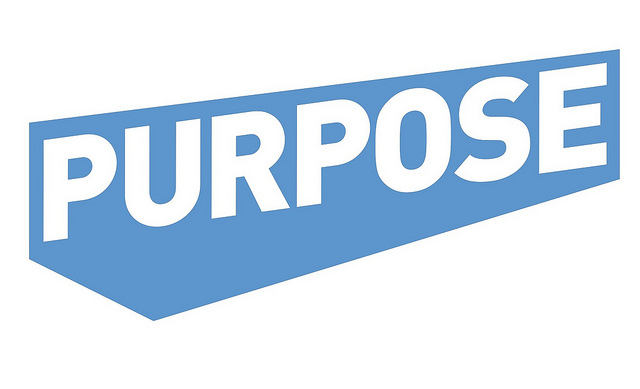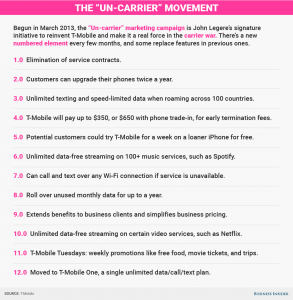|
|
|
Thursday, July 26th, 2018

I work for a channel partner within the software industry. One reason I chose to work at my current job is the fact that we align with the customers needs, find a product that fits and help implement it. I appreciate that we go to market not because of a marketing brochure, we go to market with the clients needs first.
I had an opportunity today to learn about a new vendor that is in the space I focus, workload automation.
A big word for an industry that runs everything from your bank transactions to the Starbucks app (true story). This vendor is new to me but fits a segment of the market that we are not currently meeting. It does most things that our customers need and the company seems ethical.
I say all of this to tell you it gave me some hope today. I am in a position now where I am helping to shape the direction of my company and leave a mark.
Is that enough to go to work? I find that having purpose helps a lot. It gives greater satisfaction and focus when you have purpose.
Of course, my family helps in this regard, but family doesn’t always help with burnout. Sometimes it contributes when you’re getting woken up several times a night by the baby! Money can help sometimes, too, but I find it ultimately empty. It leaves you wanting more and never satisfied.
For me, I have found what gives me the most purpose is when my input is desired, I heard and I contributed.
What gives you purpose?
Image credit: leesean
Posted in Motivation, Personal Growth, Ryan's Journal | No Comments »
Tuesday, October 18th, 2016
 *click image to read John Legere is not your typical big company CEO. Legere is an ancient 58 year-old leading a company filled with Millennials in a market driven by them.
Perhaps he should be termed the “un-CEO,” just as he is branding T-Mobile as the “un-carrier.”
… his mission to turn T-Mobile into an Un-carrier — essentially the opposite of any other mobile company.
The interview with him is worth reading, especially if you want to learn how to compete against brands (AT&T and Verizon) that are better known and far richer and successfully lead people who are not like you.
In just four short years he has taken Deutsche Telekom owned T-Mobile from a joke to the third-largest and fastest-growing carrier in the US.
Not too shabby.
He radically changed the culture, and, as he says, “set out to solving customer pain points in an attempt to fix a stupid, broken, arrogant industry.”
And not just with talk; but with an additional million square miles of LTE and new services, such as Binge On (unlimited streaming at 480p quality from services like Netflix), forcing competitors to follow suit.
His advice to business school students is something that anybody at the helm of any company, from the the corner dry cleaner to the Fortune 5, should embrace.
“I can summarize everything you need to know to lead a major corporation. Are you prepared to write this down?” And then they get all ready. I tell them I can summarize how I succeed as a leader: Listen to your employees, listen to your customers, shut the f— up, and do what they tell you. Then I say that the genius of the marketing strategy that we’ve had in every company that I’ve ever been in, is that if you ask your customers what they want and you give it to them, you shouldn’t be shocked if they love it.
Ask your customers. Listen to your customers. Give your customers what they want.
Definitely rocket science.
Image credit: T-Mobile via BI
Posted in Communication, Culture, Ducks In A Row, Leadership | No Comments »
Thursday, September 15th, 2016
 Back in June, when money got tight and investors started focusing on profits, instead of the emperor’s clothes, we considered why freemium isn’t an enterprise play. Back in June, when money got tight and investors started focusing on profits, instead of the emperor’s clothes, we considered why freemium isn’t an enterprise play.
Cheap doesn’t work, either.
Competing on price means keeping costs down.
Keeping costs down typically means skimping on headcount.
That skimping often happens in customer service/support.
Cheaper customer service frequently means online help or offshore outsourcing.
Neither option is known to keep enterprise users happy.
And while inertia may retain consumers, enterprise is quick to walk.
Like the man said, good ain’t cheap and cheap ain’t good.
Image credit: CB Insights
Posted in Entrepreneurs | No Comments »
Tuesday, November 24th, 2015

Richard Branson started talking about “doing good by doing well” years ago and multinationals across the globe are finally getting on board.
Not because they suddenly grew a social conscience, but because it pays.
CSR or Corporate Social Responsibility has gone global, with companies across the spectrum.
But increasingly, it is what investors, customers, employees and other stakeholders have come to expect and demand. Millennials — industry’s new and future customers — cast a particularly keen eye on companies’ commitment to social impact.
Microsoft, Disney, Gap, JP Morgan Chase, Mattel, Coke, Pepsi, India’s Tata Group and Suzlon Energy, Chinese battery maker BYD, Brazil’s Natura Cosmeticos.
“The better CSR programs, either in emerging multinationals or developed-country multinationals … are not just philanthropy, they’re strategic.”
Internally CSR attracts customers and investors, can be used as a recruiting tool and beefs up retention.
And keep in mind that corporate social responsibility isn’t just for big, wealthy companies. SMB and even solopreneurs are in a position to make a difference, especially in their own local community.
Read the article for ideas.
Look around for a project that excites you and all your stakeholders.
Then do it.
Talk and planning don’t count.
Flickr image credit: JustyCinMD
Posted in Culture, Ducks In A Row | No Comments »
Friday, August 21st, 2015
A Friday series exploring Startups and the people who make them go. Read all If the Shoe Fits posts here
 Founders who can’t code are often brushed off as bringing little to the table in comparison to their often tech co-founder. Founders who can’t code are often brushed off as bringing little to the table in comparison to their often tech co-founder.
Which is really stupid, considering that the majority of moving parts in any company aren’t technical.
Steve Jobs once said, “It’s technology married with liberal arts, married with the humanities, that yields the results that make our hearts sing.”
Additionally, it’s all the items that are labeled “business” — finance, marketing, design, sales, customer service and more — that make investors write checks.
Which is why non-tech executives are brought in by investors.
That’s something worth keeping squarely in mind.
The coolest tech leaves investors cold without a healthy market
Your friends and other techie’s care about the technology.
Investors care about the market.
‘Market’ translates to customers.
‘Customers’ translates to revenue.
Great code not does a market make; it is a tool used to make something that fills a market need.
Period.
Image credit: HikingArtist
Posted in If the Shoe Fits | No Comments »
Monday, January 19th, 2015

Who do you channel? Sun Tzu or Lao Tzo?
I’ve cited Lao Tzu multiple times over the years, but, unlike most management gurus, not Sun Tzu’s Art of War.
I never liked battle analogies; never understood the idea of “killing the competition.” In spite of what I was told was my naiveté, it seemed to me that loving the customer was more important.
While those battle terms are still around, it seems like I was on to something way back then.
According to Frank Cespedes, Senior Lecturer at Harvard Business School and author of Aligning Strategy and Sales those fighting words get the focus wrong.
Strategy gurus constantly use analogies with battle plans for “competitive advantage” versus the enemy. But the metaphor is not suitable because business, unlike a war or battle, is not primarily about defeating an enemy. Business is primarily about customer value: targeting customer groups and tailoring products, sales and other activities to serve those groups better or differently than others. (…) Peter Drucker emphasized, “The purpose of a business is to create a customer.” That’s also the purpose of any business strategy: make customers, not war.
Winning customers is actually pretty simple, delight them, amaze them and provide them with something they either need or want.
Do all that and the competition will fade away in the eyes of your customers.
And theirs are the only eyes that matter.
Image credit: Kevin Wong
Posted in Communication | No Comments »
Sunday, December 16th, 2012
 Shopping may not be exactly the kind of subject matter you expect when you visit, but you have to admit it’s timely. Shopping may not be exactly the kind of subject matter you expect when you visit, but you have to admit it’s timely.
Although not everybody loves it, “I hate shopping. If I need something, even a pair of socks, my assistant has to get them for me. I hate shopping!” The quote is anonymous, but it could be my sister, except she doesn’t have an assistant.
Shopping serves many purposes.
Tammy Faye Bakker, she of the four-inch false eyelashes, thinks shopping is therapeutic, “I always say shopping is cheaper than a psychiatrist.”
I’ve seen many comparisons of shopping and sex, but Adrienne Gusoff’s is one of the funniest, “Shopping is better than sex. If you’re not satisfied after shopping you can make an exchange for something you really like.”
Shopping is different for women and men as pointed out by Elayne Boosler, “When women are depressed, they eat or go shopping. Men invade another country. It’s a whole different way of thinking.”
I think men should learn to eat or go shopping, but as Cynthia Nelms so wisely says, “If men liked shopping, they’d call it research.” That’s OK, research beats war any day.
Then there is Usher, who is either more introspective or more honest than most men, “I was so nervous…I just had to go shopping”
And with just nine more shopping days nervous is what a lot of you probably are, so go shopping.
Image credit: Charlie Brewer
Posted in Quotable Quotes | No Comments »
Monday, December 10th, 2012
Customer loyalty is a top priority no matter what you are selling—especially in retail.
Just ask Tony Hsieh, whose focus on Zappos’ workforce created the platinum standard of customer service that yielded a storied (and envied) level of customer engagement and loyalty.
The most important component by far is customer engagement. “Retailers should ask themselves, ‘how do I create a partnership with the consumer?’ instead of pulling one over on them,” says Harvard Business School senior lecturer José Alvarez. Many customers see loyalty programs as a way of being ambushed by the retailer.
Many retailers see smartphones as a successful way of engaging customers—but are they?
I have to wonder if they are taking into account the real numbers.
50.4% of the US population uses smartphones
- Asian Americans 67.3%
- Hispanics 57.3%
- African Americans 54.4%
- Whites 44.7%
Now take a look how the money breaks down.
 48.5% of all smartphone handsets are Android, while Apple is at 32%, yet I constantly see product and service offers that require an iPhone. 48.5% of all smartphone handsets are Android, while Apple is at 32%, yet I constantly see product and service offers that require an iPhone.
Stop & Shop recently rolled out Scan It! Mobile, an app that turns a customer’s iPhone into a mobile scanner and checkout.
Gender-wise, smartphone use is nearly identical, 50.9% women 50.1% men, but age is a different story, with two out of three 25-34 year-olds having smartphones.
Marketers consistently target the younger demographic, but do they really have the money or are “Millennials the most screwed generation?”
The median net worth of households headed by someone 65 or older is $170,494, 42 percent higher than in 1984, while the median net worth for younger-age households is $3,662, down 68 percent from a quarter century ago, according to an analysis by the Pew Research Center.
I’m a long way from being any kind of expert, but it seems to me that basing a loyalty/customer engagement model on smartphones, let alone iPhones, doesn’t make much sense when viewed through the lens of actual usage and related income stats.
Posted in Business info, Communication, Strategy | No Comments »
Monday, September 28th, 2009
 Culture is finally at the forefront of the corporate mindset. Culture is finally at the forefront of the corporate mindset.
For Boards, CEOs, executives and managers at all levels it’s a case of ignore culture at your peril.
Almost every article and comment regarding the workplace is, directly or indirectly, a comment on culture—what works, or not; what’s needed, or not. Want to innovate? Change the culture. Increase retention? Fix/keep the culture.
Keeping people (customers, employees and investors) is the key to sustainable success and culture is one of the main reasons that people join/buy/invest in a company—and its demise is a major reason why they leave.
Think of a stool with customers, investors/stockholders, and employees comprising the legs and culture being the seat that unites them. Over-favor one leg and it will get too long, ignore another leg and it will shrink, but the end result is the same—the stool tips over.
For everything that’s been written here and other places about creating good, let alone great, cultures you still need to start with the basics:
- Practice open, honest, constant communications and insist that others do, too
- Never kill the messenger
- Accept and act on input from all levels
- Walk your talk
Sure, there’s tons more you can do, but I guarantee that if you do only these four you’ll be well on your way to creating a positive, sustainable culture.
Image credit: Sarah and Nic
Posted in Business info, Culture, Motivation, Retention | 1 Comment »
Tuesday, July 14th, 2009
Richard is still in Houston, but he thought that this case study detailing the unique problem facing a company with no competition and a radically new product would be of interest to you.
 A Case Study of Customer Mapping A Case Study of Customer Mapping
With the massive shifts in the economy, your customers are moving. Your sales and distribution channels are moving. Do you know where your customers and channels are now; where they are going tomorrow? Do you have a new product that is so that it is not just a matter of competing, but of evangelizing?
Giftventures, Inc. was facing many of these problems. Recently I worked with them to map their customers and channels.
Challenge—Find the Customers
The target market for Giftventure is parents with children in the 4-12 age range. The product is clearly a discretionary consumer product, a significant sales challenge in this environment. In addition, Giftventure is a new concept, which requires some explanation and investigation by the parent before making a purchase. How can an emerging company, with little cash to invest, gain recognition and traction with a discretionary product in a crowded consumer market?
Giftventure needed a compelling, proven go-to-market strategy in order to complete its initial fundraising, so this exploration had to be thorough, fast, and low-cost.
The results had to be conclusive and compelling, so Giftventure could focus its scarce resources in the channel that would produce large results, quickly.
To do that they needed to identify a channel that would produce large results, quickly.
The three keys:
- In starting a new product or service line, and especially in starting a new venture, you do not know where your “sweet spot” lies in the market. Don’t rely on opinions–embrace your ignorance. You must test.
- Be thorough. It can also be fast. Plan a comprehensive market exploration to test many possible channels, even in spite of your internal biases.
- Only actual market results, supported by wide outreach and in-depth contact with potential customers, can direct you to the sweet spot for your product.
The winning combination is always to
Test many market channels.
Test wide and deep.
Let actual results lead you to your sweet spot.
To read a detailed explanation of Giftventure’s customer mapping download the PDF.

Posted in Business info, Innovation, Strategy | No Comments »
|
 Subscribe to
Subscribe to
MAPping Company Success
About Miki 
Clarify your exec summary, website, etc.
Have a quick question or just want to chat? Feel free to write or call me at 360.335.8054
The 12 Ingredients of a Fillable Req
CheatSheet for InterviewERS
CheatSheet for InterviewEEs™
Give your mind a rest. Here are 4 quick ways to get rid of kinks, break a logjam or juice your creativity!
Creative mousing
Bubblewrap!
Animal innovation
Brain teaser
The latest disaster is here at home; donate to the East Coast recovery efforts now!
Text REDCROSS to 90999 to make a $10 donation or call 00.733.2767. $10 really really does make a difference and you'll never miss it.
And always donate what you can whenever you can
The following accept cash and in-kind donations: Doctors Without Borders, UNICEF, Red Cross, World Food Program, Save the Children
*/
?>About Miki
About KG
Clarify your exec summary, website, marketing collateral, etc.
Have a question or just want to chat @ no cost? Feel free to write
Download useful assistance now.
Entrepreneurs face difficulties that are hard for most people to imagine, let alone understand. You can find anonymous help and connections that do understand at 7 cups of tea.
Crises never end.
$10 really does make a difference and you’ll never miss it,
while $10 a month has exponential power.
Always donate what you can whenever you can.
The following accept cash and in-kind donations:
|








 Founders who can’t code are often brushed off as bringing little to the table in comparison to their often tech co-founder.
Founders who can’t code are often brushed off as bringing little to the table in comparison to their often tech co-founder.


 Culture is finally at the forefront of the corporate mindset.
Culture is finally at the forefront of the corporate mindset. A Case Study of Customer Mapping
A Case Study of Customer Mapping

